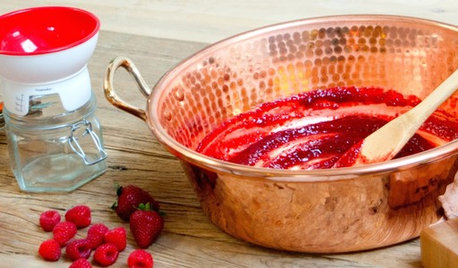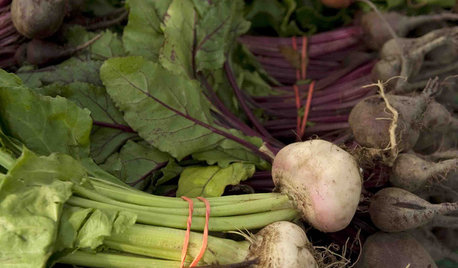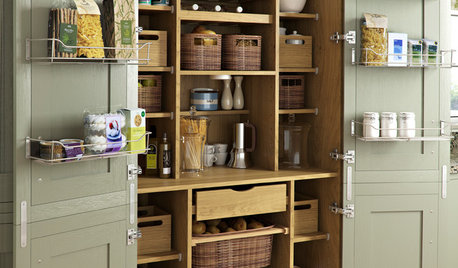Pickled Peaches
avidchamp
16 years ago
Related Stories

SHOP HOUZZHouzz Products: Save a Taste of Summer
Can't bear to part with the flavors of summer peaches, berries and tomatoes? Then jam on it!
Full Story
FEEL-GOOD HOMESimple Pleasures: Make Do and Mend
Experience the satisfaction of fixing, repurposing and creating things yourself around the home
Full Story
COLORTake a Slice From Psychology to Use Orange Better
Get the scoop on this attention-seeking hue and learn how it can bring a refreshing zing to your interiors — and your spirit
Full Story
WALL TREATMENTSThese Are Not Your Grandfather’s Pine Walls
The knotty look went from popular to pariah in years past, but today’s designers are finding new and stylish ways to embrace it
Full Story
MOST POPULARHow to Get Rid of Those Pesky Summer Fruit Flies
Learn what fruit flies are, how to prevent them and how to get rid of them in your home
Full Story
DECORATING GUIDESPop Culture Watch: 12 Home Trends from the '80s Are Back
Hold on to your hat (over your humongous hair); interior design elements of the 1980s have shot forward to today, in updated fashion
Full Story
REMODELING GUIDESAre You Gutsy Enough to Paint Your Floor White?
Sleek and glossy or softened by wear, white floors charm
Full Story
FARM YOUR YARDCool-Season Vegetables: How to Grow Beets
Give canned versions of this fall and spring garden favorite the heave-ho and discover its true flavor and colors
Full Story
COLORDreaming in Color: 8 Gorgeously Green Bedrooms
Bring in a bold splash of watery blue-green or a slice of soft celery for a colorful yet sleep-friendly sanctuary
Full Story
KITCHEN PANTRIES80 Pretty and Practical Kitchen Pantries
This collection of kitchen pantries covers a wide range of sizes, styles and budgets
Full StoryMore Discussions






ksrogers
bcskye
Related Professionals
Quincy Landscape Architects & Landscape Designers · Edmond Landscape Contractors · Darien Landscape Contractors · Estelle Landscape Contractors · Glendale Heights Landscape Contractors · Harvey Landscape Contractors · Lemoore Landscape Contractors · Northport Landscape Contractors · Pleasant Prairie Landscape Contractors · Riverhead Landscape Contractors · Tustin Landscape Contractors · Chicago Ridge Roofing & Gutters · Dearborn Driveway Installation & Maintenance · Hayward Driveway Installation & Maintenance · Indio Driveway Installation & Maintenancekayskats
Linda_Lou
ksrogers
avidchampOriginal Author
gran2
ksrogers